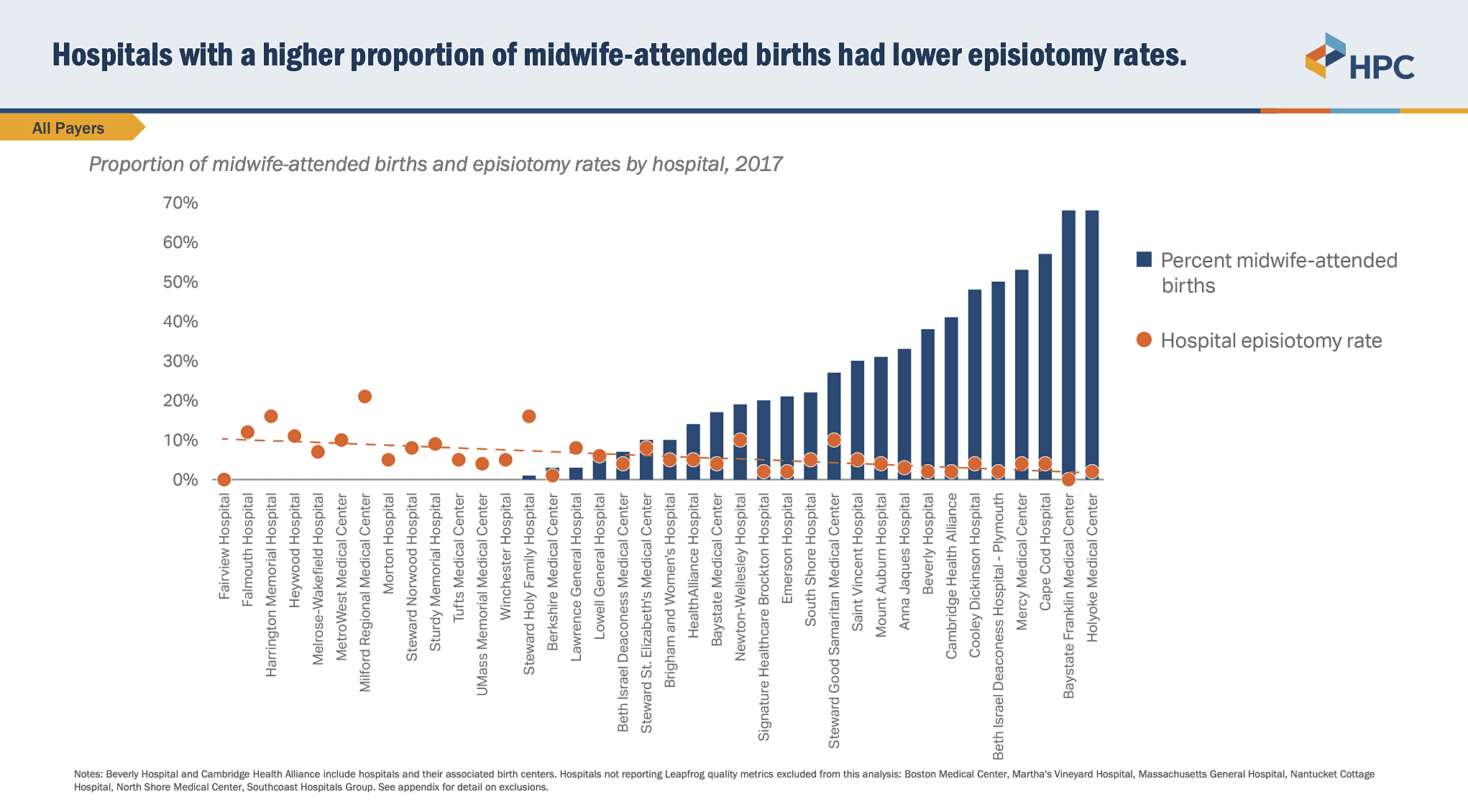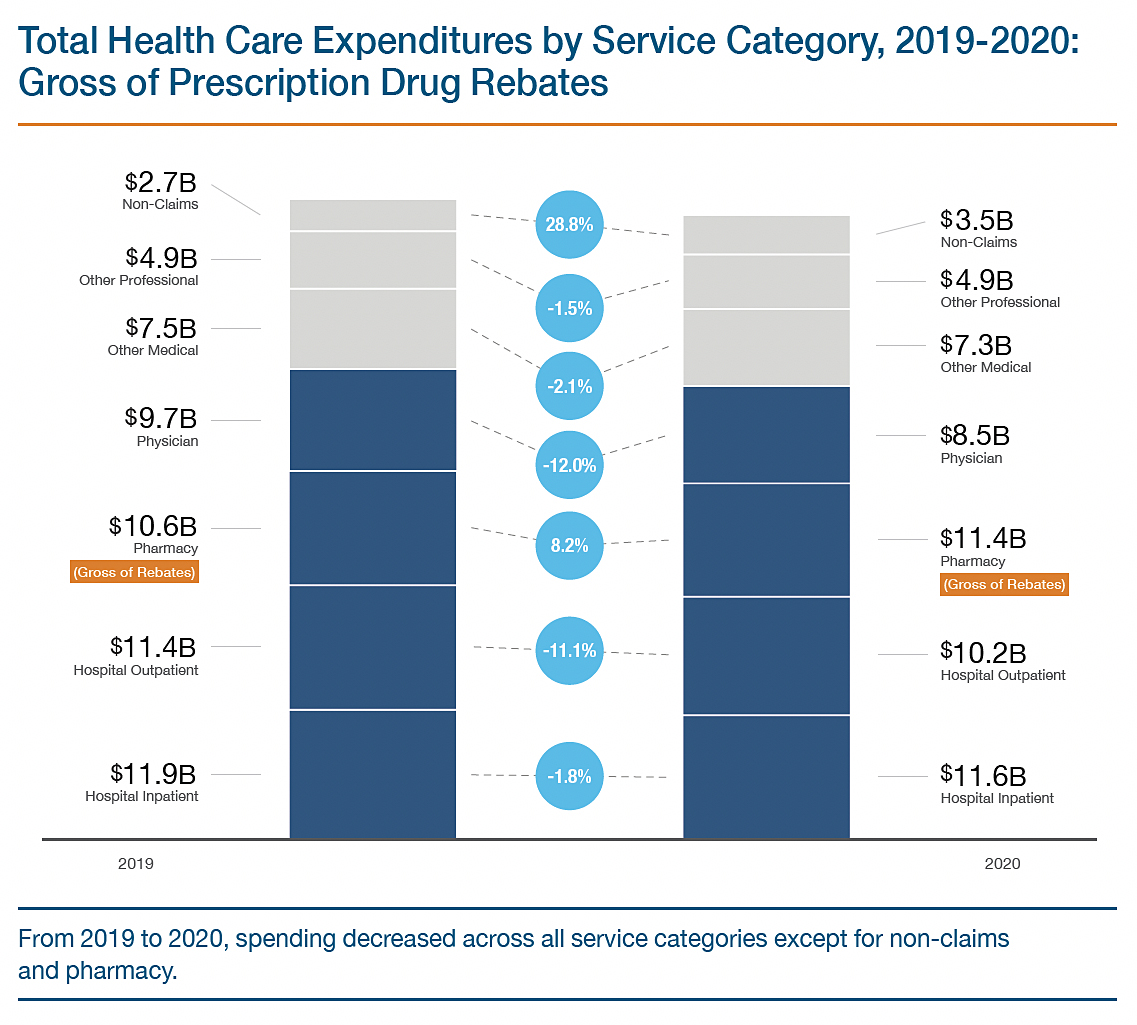Data Matters - March 2022 Edition Email

DATE: March 31, 2022

Opening Message:
Happy spring, and with it, hopes for sunnier weather and times ahead. In today’s DataMatters, we’re highlighting CHIA’s just-out Annual Report on the Performance of the Massachusetts Health Care System and the myriad of Massachusetts health costs and spending topics it covers - including Total Health Care Expenditures (THCE), a statewide data point CHIA is tasked by its enabling statute to produce. THCE is produced as an overall and a per-capita figure. Our sister agency, the Health Policy Commission, uses the data to help assess whether Massachusetts health care spending has met, exceeded, or fallen below state-set cost containment goals (the health care Cost Growth Benchmark) each year. Total Medical Expenses, calculated separately on a per-payer basis, measure where individual payers’ spending falls in relation to the benchmark. Read more about THCE in “News You Can Use,” below.
The Health Policy Commission is a frequent CHIA partner and data user, as this month’s “Data User Profile” highlights, in featuring that agency’s publication that combined two CHIA data sources – APCD-based birth episode data and quality data produced by the non-profit Leapfrog Group and compiled by CHIA in its Focus on Provider Quality report – with Department of Public Health birth record data to document use of midwife care and associated spending and quality outcomes in Massachusetts hospitals.
As always, the “Publications and Data Releases” and “Upcoming Events” sections of DataMatters will keep you up to date on reports CHIA has released recently and events of interest to the local health data community.
We want to know your thoughts about this newsletter – things you like, things you wish we’d include, suggestions for future user profiles. Please email us at newsletter@chiamass.gov.
News You Can Use
The signature datapoint calculated each year for CHIA’s Annual Report is Massachusetts’ Total Health Care Expenditures (THCE). This year’s Annual Report release included an animated explainer video and interactive graphic to provide more accessible depictions of THCE, a somewhat complex calculation which is based on summary data that commercial and public insurers report to CHIA specifically for this purpose. During 2020, it totaled $62.6 billion, or $8,912 per resident.
Notably, the COVID-19 pandemic had a great impact on health care spending in 2020. For example, hospitals canceled or curtailed elective procedures during this time as DPH imposed temporary restrictions to preserve capacity and patients opted to delay in-person care. Massachusetts experienced a 2.4% decrease in Total Health Care Expenditures (THCE) per capita between 2019 and 2020, representing the first time the state has experienced negative THCE growth since measurement began, and falling well below the health care cost growth benchmark of 3.1%. However, the context of the extraordinary, time-limited circumstances of the pandemic is important. Findings from 2020 may not accurately predict future cost growth.
The graphic to the right depicts THCE in 2019 and 2020, broken down by type of service or expense. As in the past, hospital and physician spending accounted for the bulk of spending. Pharmacy and “non-claims” spending (generally consisting of risk settlements or performance-based payments to physician groups as well as non-direct care payments for COVID relief in 2020) were the only spending categories that increased.
For the first time, this year’s Annual Report also includes a chapter on hospital and nursing facility utilization and financial status through 2020 (and in limited instances, into 2021) as reported in CHIA analyses of CHIA’s Case Mix [hospital discharge] database, hospital financial reporting, and nursing facility cost reports CHIA separately produces regular updates to its Case Mix and Hospital and Health System Finance reporting.
Data User Profile
Each edition of DataMatters features an interview with a CHIA data user, focusing on their experience obtaining and using our data and how they used it. We are grateful to Dr. Sasha Albert, Senior Researcher at the Massachusetts Health Policy Commission, for discussing her work with CHIA’s APCD data, which she combined with Department of Public Health birth records and Leapfrog Group quality data to produce the HPC’s recently published chartpack on Certified Nurse Midwives and Maternity Care in Massachusetts.

Using CHIA APCD data combined with other sources, the Health Policy Commission found that hospitals with higher rates of midwifery care had lower cesarean and episiotomy rates during birth episodes. The graphic above is part of their recently released chartpack, Certified Nurse Midwives and Maternity Care in Massachusetts, profiled in an interview below. This chart is sourced from an HPC analysis of Massachusetts Department of Public Health birth record data and Leapfrog hospital quality metrics as reported to CHIA.
What was your research question? Why did you choose that question?
Labor and delivery care is the top category of hospital admission for Massachusetts residents under age 65, but the HPC has found wide variation in spending and quality across hospitals. Likewise, despite favorable outcomes associated with midwifery care - and although Certified Nurse Midwives (CNMs) have had expanded scope of practice in MA since 2012 - rates of midwife-attended births remain low. We sought to understand outcomes associated with midwifery in the Commonwealth, and persistent barriers to CNM practice.
Which CHIA data did you use?
We used the MA All-Payer Claims Database (APCD) 7.0 and 2017 Leapfrog hospital quality metrics reported to CHIA.
What was your experience using CHIA data?
This study required several data sources, because no single data source included all the information we needed. Although the research team at the HPC often conducts studies using the APCD, we found that we could not reliably use commercial insurance claims data to measure midwifery care. We saw few claims associated with CNMs, and learned that this was because CNMs are rarely listed as billing providers, even when they are directly involved in delivery. This in itself was a useful finding: it indicated that how care is billed might inhibit broader midwifery practice in Massachusetts.
We used three data sources, linked by hospital. Using APCD data, we created 2016-2017 birthing episodes, including 6 months before admission for a labor-and-delivery inpatient stay during 2017, the inpatient stay, and 3 months after discharge, for 7,180 individuals who gave birth in 2017. These birthing episodes allowed us to measure spending for prenatal-through-postpartum care, and length of hospital stay for commercially-insured individuals. We used Leapfrog data to measure hospital cesarean section and episiotomy rates. We linked each data source to 2017 birth record data from the Massachusetts Department of Public Health in order to measure rates of midwife-attended births at each hospital and explore the relationship between midwifery care and spending and quality outcomes.
Please briefly describe your research and key findings
- In 2017, Certified Nurse Midwives (CNMs) attended 17% of Massachusetts births.
- Thirty of the 44 hospitals that provided obstetric care in MA as of 2017 also offered midwifery services. However, rates of midwifery care varied substantially by hospital, from zero to nearly 70%.
- Hospitals with higher rates of midwifery care have lower cesarean and episiotomy rates, and lower spending: a 10% increase in midwife-attended births in Massachusetts would result in 3,560 fewer cesarean births, 860 fewer episiotomies, and $530 less in spending per episode of care.
- Despite Massachusetts granting full scope of practice authority to CNMs in 2012, hospital and payer policies can limit CNM practice.
Which findings were particularly interesting, or surprising for you?
The variation in rates of hospital midwifery care indicated a surprising diversity of care models for birth care, even among hospitals with high rates of midwifery. Additionally, as of 2017, some regions had substantial rates of midwife-attended births (such as the Pioneer Valley) while other areas (such as Metro West) had no hospitals with midwifery, indicating that access to midwives varies by geography.
What "takeaway" information would you like to highlight from your research and/or your experience using our data?
Linking insurance claims to other data sources allows for asking a wider variety of research questions.
Publications and Data Releases
March 2022
With this edition of DataMatters, CHIA announces publication of the latest edition of the bi-annual Enrollment Trends report, with data covering September 2019 - September 2021. The report includes breakouts by payers and product types in private commercial and public market sectors in an interactive dashboard.
March 2022
Today CHIA published the latest Quarterly Acute Hospital and Health System Financial Performance report, including data from acute hospitals, associated health systems, and physician organizations for the period ending December 31, 2021. This report provides an update on profitability, liquidity, and solvency for these entities.
Readmissions Report
March 2022
CHIA’s most recent report on Hospital-Wide Adult All-Payer Readmissions in Massachusetts: SFY 2011-2020 was published on March 24. Unplanned hospital readmissions, defined as rehospitalizations within 30 days of an inpatient discharge, are an indicator of health system performance. This report presents readmissions broken down by a variety of factors. New this year, social risk factors were incorporated into the risk-standardization methodology for readmission rates to provide a fairer comparison of hospital performance.
March 2022
The most recent quarterly update of Hospital Inpatient Discharge Data (HIDD), with data from October 2018 through December 2021, was released on March 15. This is an update to the Massachusetts Acute Care Hospital Inpatient Discharge Data (FFY 2016-2019) report using interim data that offers insights into patterns and trends on key inpatient utilization measures through a series of interactive dashboards alongside a summary and databook.
March 2022
As highlighted in the “News You Can Use” section above, CHIA published its 2022 Annual Report on March 14. The report is CHIA’s first comprehensive look at the COVID-19 pandemic’s unprecedented impact on the Massachusetts health care system in 2020. It includes a calculation of Total Health Care Expenditures (overall and per capita) for 2020, as well as other key indicators used to assess the performance of the state's health care system.
March 2022
CHIA and its predecessor agency have collected Long Term Care Facility (Nursing Home and Rest Home) Cost Reports since 2001. CHIA’s Pricing Team uses this data in its rate-setting activities. Cost Reports are a matter of public record, and as of early March, they are more easily accessible in searchable Excel and Tableau formats available on CHIA’s website. Currently, 2020 reports are available; stay tuned for more.
February 2022
In February, the Health Policy Commission published Issue 21 of the HPC Datapoints series, The Quality Measure Alignment Taskforce’s Evaluation of Payer Adherence to the Massachusetts Aligned Measure Set. It is the result of close collaboration between CHIA and HPC staff working as members of the Quality Measure Alignment Taskforce led by the Executive Office of Health and Human Services. The Taskforce’s main goal has been to propose an aligned set of quality measures for use in global budget-based risk contracts between Massachusetts payers and providers; this interactive online brief assesses payer adherence to the proposed measures to date. If passed, Governor Baker’s health care reform bill, An Act Investing in the Future of Our Health, would codify the work of the Taskforce and mandate adoption of the Aligned Measure Set.
Mandated Benefit Review
March 2022
This week CHIA released its review of S769 An Act relative to collaborative care. In accordance with Massachusetts General Law, CHIA completes reviews of mandated benefit bills that are referred to the agency by the Legislature. The reports are comprised of a medical efficacy analysis and an estimate of the effect that the proposed mandated benefit would have on the cost of health insurance. If passed, this bill would require insurers to cover mental health or substance use disorder treatment services that are delivered via the Psychiatric Collaborative Care Model, a patient-centered treatment model that integrates behavioral health with primary care.
Upcoming Events and Resources
Events and announcements of interest to our community, organized by CHIA, other Commonwealth agencies, and others.
CHIA Oversight Council Budget Hearing
Wednesday, April 20, 2 p.m.
CHIA’s appointed Oversight Council will meet on Wednesday, April 20 to consider the $31.3 million appropriation proposed for CHIA in Gov. Charlie Baker’s FY23 budget (line item 4100-0060). Members of the public are invited and encouraged to testify about CHIA’s budget request at the hearing. They can do so by signing up to speak at legal@chiamass.gov , or emailing comments to the same address/mailing them to Center for Health Information and Analysis, 501 Boylston Street, Suite 5100, Boston, MA 02116, Attention: Oversight Council, by Monday, May 2. The hearing will also stream live on CHIA’s YouTube channel.
CHIA Data User Workgroups
Tuesday, April 26, 3:00 p.m.
CHIA hosts monthly, public workgroups as opportunities for users of the APCD and Case Mix databases to meet with CHIA’s in-house data experts to discuss analytical techniques and data questions. Meetings alternate between APCD and Case Mix; the next workgroup, focusing on APCD data, will be hosted on Zoom, April 26 at 3 p.m. For more information or to register, visit the information page.
Health Policy Commission Board Meeting
Wednesday, April 13, noon
The HPC’s 11-member Board meets approximately every six weeks throughout the year to review staff- (or guest)- presented overviews of the agency’s major workstreams, and other topics related to health care cost containment and reform. Major reports, statutory regulations, and publications are authorized by a majority vote at these meetings.
Department of Public Health Public Health Council Meeting
Wednesday, April 6, 9:00 a.m.
The coronavirus pandemic has left health care workers mentally fatigued, causing many to leave the industry. STAT News hosts this free, virtual event to discuss ways to support and retain clinicians and other staff. Register here. See more upcoming STAT News events here.
Academy Health Health Datapalooza and National Health Policy Conference
Monday & Tuesday, April 4 & 5
The joint Health Datapalooza and National Health Policy Conference, to be held in Arlington, Virginia, offers attendees actionable steps and practical concepts, introduced by leading policymakers and innovators, that they can apply directly to their work.Visit the conference website for more information or to register.
National Association of Health Data Organizations (NAHDO) In-Person Workshop in Seattle
Tuesday & Wednesday, May 10 & 11
NAHDO will host an in-person conference with topic-driven sessions designed to identify solutions to current challenges facing health data organizations. The conference will include workshops in several categories of interest. For more information and to register, visit the conference website.
Massachusetts Health Connector Health insurance sign-ups via state income tax form
Uninsured Massachusetts residents can check a box on their 2021 state income tax forms to start the process of getting health insurance through the Massachusetts Health Connector’s new Simple Sign-up program. By checking this box, individuals authorize the state Department of Revenue to communicate select elements of the tax filer’s information with the Health Connector, which will use this information to create and send tailored information to the tax filer and help him or her obtain the most appropriate health plan.
The Massachusetts Health Connector is the Commonwealth’s health insurance exchange, providing individuals and small-employer members with health and dental insurance. Massachusetts residents who do not have health insurance from an employer or other entity can use the exchange to enroll in coverage.
CENTER FOR HEALTH INFORMATION AND ANALYSIS
www.chiamass.gov

